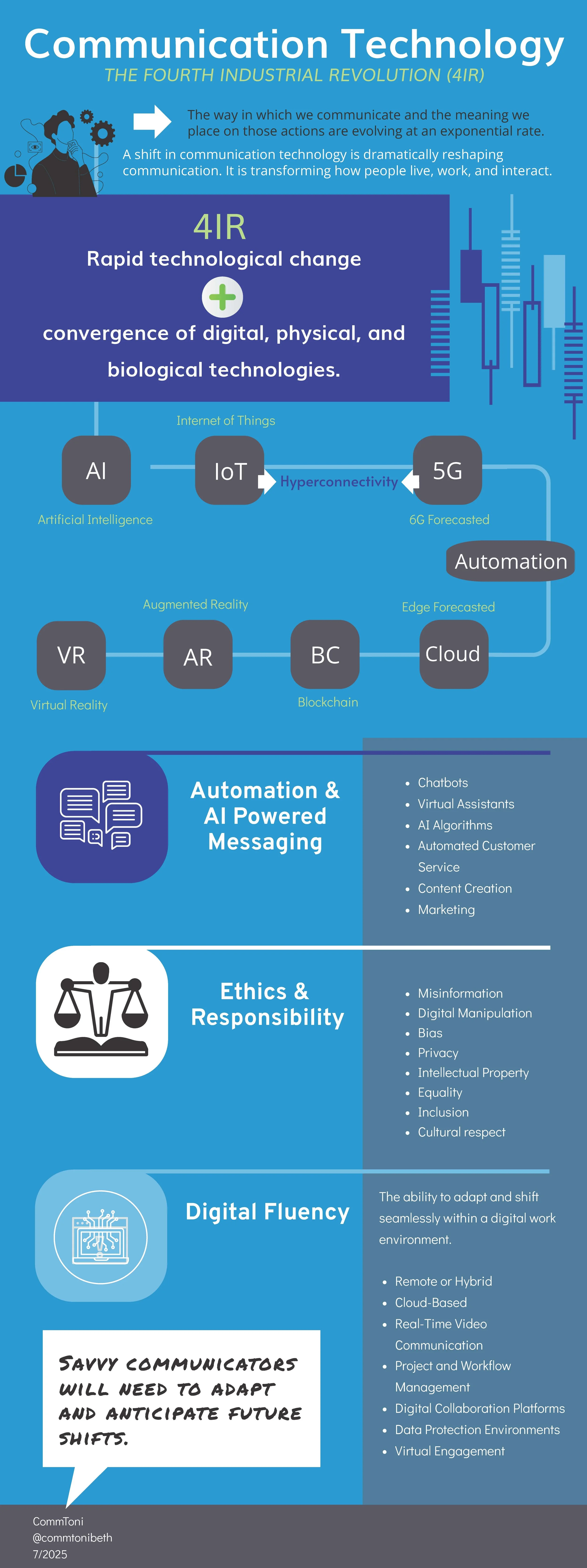
CONTEMPORARY COMMUNICATION:
Technology & The Reshaping of Culture
-
Internet of Things (IoT). Reprinted from "Exploring the full potentials of IoT for better financial growth and stability: A comprehensive survey,” by Allioui, H., & Mourdi, Y. (2023), 23(19),8015. https://doi.org/10.3390/s23198015. Licensed under CC BY 4.0.
Contemporary communication technologies are actively reshaping cultural norms, practices, and modes of social interaction. In a recent qualitative study that explored the relationship between technological growth and cultural development, it argued that, “Technology acts as a catalyst for cultural exchange, innovation and adaptation, enabling unprecedented global communication and the exchange of ideas” (Alsaleh, 2024). Modern communication technologies such as IoT, 5G, AI, and cloud computing have given rise to new mediums for interaction and information exchange. Social media, cloud-based spaces, and AI-driven interfaces are just a few of the new mediums changing communication and culture. Research has proven that mediums shape the message and how it is received (Oba, 2024). This is why culture, societies values and norms, are rapidly evolving. Communication technology is influencing social behavior and shaping culture by how we connect, communicate, share knowledge, and build relationships. This matter has a far-reaching impact on communication, touching individuals, companies, and government bodies alike.
Communication continues to evolve in dynamic and multifaceted ways. As humanity and technology progress, so does the way in which we communicate and the meaning we give it. From the telegraph’s use of electromagnetic technology in the 1830s to today’s reliance on text message’s Short Message Service (SMS), the medium through which we communicate shapes the message itself. Nelissen (2018) claims that digital slang, termed digilect by Hungarian Linguistic Professor Agnes Veszelski, is the new language of digital media. From emoji usage to modified spelling and grammar, technology is fundamentally transforming the way we communicate. We are currently experiencing a period of rapid transformation, unmatched since the Third Industrial Revolution—the pivotal shift from analog to digital technologies. This rapid advancement in communication often follows significant events, such as COVID-19, which alter social norms and values (Koh, 2024). Many refer to this era as the Fourth Industrial Revolution, marked by intelligent automation and data-driven systems such as artificial intelligence (AI). Social and digital media influence behavior and shape culture by transforming how individuals connect, communicate, share knowledge, and build relationships (Strasburger, 2023). Technology has disrupted traditional communication pathways and created new digital landscapes. In order to stay current, savvy communicators will need to adapt and anticipate future shifts.
-
Alsaleh, A. (2024). The impact of technological advancement on culture and society. Scientific Reports, 14(1). https://doi.org/10.1038/s41598-024-83995-z
Koh, L., & Lapworth, A. (2024). Refiguring habits of subjectivity, communication, and space in online video calls. Area, 56(2), 1–8. https://doi.org/10.1111/area.12903
Nelissen, E. (2018). How digital media is changing the way we talk. De Gruter Conversations. https://blog.degruyter.com/digital-media-changing-way-talk/
Oba, D., & Berger, J. (2024). How communication mediums shape the message. Journal of Consumer Psychology, 34(3), 406–424. https://doi.org/10.1002/jcpy.1372
Stasberger, G. D. (2023). Digital media: Shaping communication, culture, and society in the digital age. Global Media Journal, 21(64), 1-3. https://doi.org/10.36648/1550-7521.21.64.388
Toni LaSalle, August 2025
“A leader is one who knows the way, goes the way, and shows the way” (Maxwell, 1998).
-
Developing expertise in emerging communication trends and technologies is essential for navigating the evolving media landscape.
-
The field of communication studies benefits greatly from the increased sharing of cutting-edge research and scholarly innovation.
References
Akinbi, A. O. (2023). Digital forensics challenges and readiness for 6G Internet of Things (IoT) networks. Wiley Interdisciplinary Reviews: Forensic Science, 5(6), 1–21. https://doi.org/10.1002/wfs2.1496
Alsaleh, A. (2024). The impact of technological advancement on culture and society. Scientific Reports, 14(1). https://doi.org/10.1038/s41598-024-83995-z
Geetha, B. T., Sharma, M. K., Shunmugasundaram, M., Patel, J. D., Lourens, M., & Melanie Lourens, D. (2024). Advancing Women’s Empowerment in the Technology Sector with a Concentration on the Internet of Things (IoT) and Artificial Intelligence (AI). 2024 International Conference on Trends in Quantum Computing and Emerging Business Technologies, Trends in Quantum Computing and Emerging Business Technologies, 2024 International Conference On, 1–6. https://doi.org/10.1109/TQCEBT59414.2024.10545149
Florea, N. V., & Croitoru, G. (2025). The Impact of Artificial Intelligence on Communication Dynamics and Performance in Organizational Leadership. Administrative Sciences (2076-3387), 15(2), 33. https://doi.org/10.3390/admsci15020033
Kaňková, J., Binder, A., & Matthes, J. (2025). Health-Related Communication of Social Media Influencers: A Scoping Review. Health Communication, 40(7), 1300–1313. https://doi.org/10.1080/10410236.2024.2397268
Koh, L., & Lapworth, A. (2024). Refiguring habits of subjectivity, communication, and space in online video calls. Area, 56(2), 1–8. https://doi.org/10.1111/area.12903
Oba, D., & Berger, J. (2024). How communication mediums shape the message. Journal of Consumer Psychology, 34(3), 406–424. https://doi.org/10.1002/jcpy.1372
Yue, C. A., Zhou, A., Page, T. G.,Morehouse, J., Capizzo, L. W., & Toth, E. L. (2025). The Past, Present, and Future of Internal Communication in Public Relations: A Computational Review of the Emerging Literature. Journal of Public Relations Research, 37(1/2), 4–30. https://doi.org/10.1080/1062726X.2024.2329543
Stasberger, G. D. (2023). Digital Media: Shaping Communication, Culture, and Society in the Digital Age. Global Media Journal, 21(64), 1-3. https://doi.org/10.36648/1550-7521.21.64.388
-
Engaging with organizations that contribute to the advancement of communication practices and foster social impact is a meaningful way to deepen one’s professional and scholarly development.
A leader in contemporary communication.
CommToni
@commtonibeth




